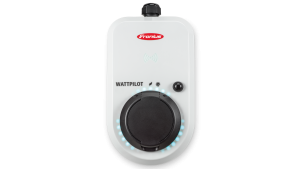Electric Vehicle Chargers
Australis Solar can help you design, install and service sustainable energy solutions.
We are committed to excellence, providing our services to the Perth region and across Western Australia.
The Australis Solar Guide to Electric Vehicle Chargers in Australia.
This comprehensive guide will explain in detail everything you need to know about electric vehicle chargers in Australia. Australis Solar has expertise in solar PV, battery storage and other renewable energy solutions and has compiled this guide to get you updated and knowledgeable so you can make informed decisions.
- Unpacking the basics: What are EV chargers?
- How to choose the right EV charger for your needs
- Installing EV chargers at Home: What you need to know
- Public electric vehicle charging networks: A Growing Infrastructure
- Safety and Maintenance of EV Chargers
- Future trends in Electric Vehicle charging
Understanding EV Chargers: A Comprehensive Guide
Unpacking the Basics: What Are EV Chargers?
Electric Vehicle (EV) chargers are devices that supply electric energy to recharge EV batteries. Unlike refueling stations for petrol or diesel cars, EV chargers come in various forms and power outputs.
Types of Electric Vehicle Chargers: Level 1, Level 2, and DC Fast Charging Explained
In Australia, EV chargers are classified into three main types each serving different needs and charging speeds:
- Level 1 Chargers: These use a standard 240-volt outlet and are the slowest type, typically adding about 10 km of range per hour of charging.
- Level 2 Chargers: Often installed at homes or public locations, these require a 240-volt outlet and a dedicated circuit, adding 20-40 km of range per hour.
- DC Fast Chargers: Found at commercial locations, these provide rapid charging by delivering high power directly to the battery, adding up to 150 km of range in just 30 minutes.
Level 1 Chargers
Overview: Level 1 chargers use a standard 240-volt household outlet. They are the most basic type of charger and provide the slowest charging speed, typically adding about 10 km of range per hour.
Details:
- Voltage: 240 volts
- Current: Usually 10-15 amps
- Charging Speed: Adds approximately 10 km of range per hour.
Example:
- Enphase Mobile: Portable Electric Vehicle Supply Equipment (EVSE) from brands like Enphase offer Level 1 charging. These chargers are handy for overnight charging when driving distances are short and the vehicle is parked for long periods.
Level 2 Chargers
Overview: Level 2 chargers are often installed at homes or public locations. They require a 240-volt outlet and a dedicated AC circuit, providing faster charging speeds compared to Level 1 chargers.
Details:
- Voltage: 240 volts
- Current: 16-32 amps
- Charging Speed: Adds approximately 20-40 km of range per hour
Examples:
- Fronius Wattpilot: The Fronius Wattpilot is a popular Level 2 charger in Australia. It is designed for both home and public use, offering smart charging features that allow users to optimise charging times and costs. The Wattpilot can be controlled via an app, enabling users to set charging schedules and monitor usage.
- Zappi: Provides you with tailor-made charging to suit your lifestyle and demands. Whether you need a “fast” charge to get you going in a hurry or are happy to wait for your charge to take place using 100% renewable energy, Zappi gives you the flexibility to charge on your terms.
- GoodWe HCA Series: The GoodWe EV Charger can be installed in both single and three phase properties. It provides various communication options and integrates seamlessly with the cost-free monitoring platform SEMS. Therefore, system owners are able to intelligently monitor both the PV and charging systems, schedule charging processes, and optimize all household energy.
- Tesla: A notable brand and it would not be comprehensive without mentioning. Tesla provides a range of Level 2 chargers that are suitable for residential and commercial installations. Their products include smart features like remote monitoring and integration with solar power systems, making them a versatile option for Australian EV owners.
DC Fast Chargers
Overview: DC Fast Chargers are found at commercial locations and provide rapid charging by delivering high power directly to the battery. These chargers are essential for long-distance travel, as they can significantly reduce charging times.
Details:
- Voltage: 400-900 volts (varies by model)
- Current: 50-500 amps (varies by model)
- Charging Speed: Adds up to 150 km of range in just 30 minutes
Examples:
- Chargefox: As the largest public EV charging network in Australia, Chargefox offers DC Fast Chargers that can deliver up to 350 kW of power. These chargers are strategically located along major highways and in key urban areas, providing fast and convenient charging for long-distance travelers.
- Tritium: An Australian company, Tritium manufactures a range of DC Fast Chargers used both domestically and internationally. Their Veefil-RT 50kW DC Fast Charger is widely deployed in public charging stations and can add up to 50 km of range in just 10 minutes, making it a reliable choice for quick top-ups.
Additional Insights
Level 1 Chargers are best suited for:
- Home use where overnight charging is sufficient.
- Drivers with short daily commutes.
- Occasional use when no faster option is available.
Level 2 Chargers are ideal for:
- Homeowners looking for a faster, more efficient charging solution.
- Public charging stations in workplaces, shopping centres, and car parks.
- Residential complexes and apartment buildings offering shared charging facilities.
DC Fast Chargers are crucial for:
- Long-distance travel and highway rest stops.
- Fleet vehicles needing quick turnaround times.
- Urban locations with high traffic and demand for rapid charging.
Conclusion
Understanding the different types of EV chargers is essential for optimising your electric vehicle’s charging strategy. Whether you need the simplicity and affordability of a Level 1 charger, the convenience and speed of a Level 2 charger, or the rapid power of a DC Fast Charger, there are options available to suit every need in the Australian market. Brands like Fronius, GoodWe, Zappi, JetCharge and Chargefox provide a range of products tailored to different charging requirements, ensuring that Australian EV owners have access to the best solutions for their specific circumstances.
For further reading on Zappi and experiences with them: Zappi Review
How to Choose the Right Electric Vehicle Charger for Your Needs
Choosing the right EV charger depends on your driving habits, budget, and charging location. For most Australian households, a Level 2 charger offers a good balance of cost and charging speed, while DC EV Fast Chargers are ideal for long trips and quick top-ups on the go as these are usually commercial and currently are costly and require extensive electrical work done to be installed in residential homes.
Smart chargers can interface with your solar inverter and smart energy meters to ensure you are charging your car using 100% renewable energy.
Some of these chargers can even monitor your other house loads to see exactly how your power is being used, and automatically adjust themselves to provide optimal charging while reducing grid stress.
We offer AC chargers that are configurable to both single-phase and three-phase charging, and up to 22kW of output with dynamic load balancing capabilities.
Installing EV Chargers at Home: What You Need to Know
Step-by-Step Installation Guide for Home Electric Vehicle Chargers
Installing an EV charger at home involves several steps:
- Assessment: Evaluate your electrical capacity and choose a suitable location – if you are unsure, get in contact with us
- Purchase: Buy a Level 2 charger from a reputable supplier such as Australis Solar
- Hire a Licensed Electrician: In Australia, it’s mandatory to use a licensed electrician for installation – We have a team of qualified, experienced electricians who have installed electric vehicle chargers all across Perth.
- Installation: Australis Solar will install and test the charger.
Costs and Considerations for Home Electric Vehicle Charger Installation
The cost of installing a Level 2 charger in Australia ranges from $1,000 to $2,500, including the device and labour. Factors such as the distance from the electrical panel and any necessary upgrades can affect the price. It is usually cheaper to incorporate an electric vehicle charger into an installation with Australis Solar as we would already be on site so there are no additional call out fees.
Maximising Efficiency: Tips for Home Electric Vehicle Charging
To maximise efficiency in home EV charging, it’s essential to charge your electric vehicle during off-peak hours when electricity rates are significantly lower. This not only saves money but also reduces the strain on the power grid. Additionally, consider installing solar panels with Australis Solar to power your EV charger sustainably. By harnessing solar energy, you can decrease your reliance on the grid and further reduce your electricity costs. Australis Solar installs panels that are designed to optimise energy capture, ensuring that your EV charging process is as efficient and eco-friendly as possible. Investing in a residential solar system from Australis Solar not only promotes renewable energy use but also enhances the overall efficiency and cost-effectiveness of your electric vehicle charging setup.
Public Electric Vehicle Charging Networks: A Growing Infrastructure
Navigating Public Electric Vehicle Charging Stations: Tips and Tricks
Australia’s public EV charging infrastructure is expanding rapidly. Apps like PlugShare and Chargefox can help you locate charging stations, check availability, and even reserve a spot.
You can find their useful websites here: PlugShare and ChargeFox
Synergy has also written a comprehensive guide to understanding where their network is expanding to and how they are creating easier access for all electric vehicle chargers. Synergy WA EV Network
Evie Network provides fast and ultra-fast chargers in convenient locations like Karrinyup Shopping centre in Perth. They have even installed Evie Networks in car parks such as Dan Murphy’s
Safety and Maintenance of Electric Vehicle Chargers
Ensuring Safety When Using Electric Vehicle Chargers
Always use certified chargers and have them installed by licensed electricians. Regularly inspect cables and connectors for wear and tear to ensure safe operation.
Regular Maintenance Tips for Home EV Chargers
Keep your charger clean, check for damage regularly, and ensure proper ventilation to prevent overheating. Follow manufacturer guidelines for maintenance or for issues like interrupted charging or error messages, consult the user manual, reset the charger, or contact the manufacturer for support. If Australis Solar installed your electric vehicle charger in Perth, then get in contact and we will find a solution.
Future Trends in EV Charging
Wireless EV Charging: Is It the Future?
The Future of Public Charging: Innovations and Trends
Innovations such as wireless charging and vehicle-to-grid technology are set to transform public EV charging in Australia, making it more convenient and integrated with renewable energy sources. Recent advances include: faster charging speeds, bidirectional chargers that can supply power back to the grid, and integration with home energy management systems.
Wireless charging technology, which uses electromagnetic fields to transfer energy, is being developed and tested in Australia, promising a seamless charging experience without cables.
Ultra-Fast Charging: What It Means for EV Owners
Ultra-fast chargers, capable of delivering up to 350 kW, are being deployed across Australia, significantly reducing charging times and making long-distance travel more feasible. The electric vehicle era is still in its infancy and there is plenty of innovation to come.
Autonomous vehicles will likely integrate with smart charging infrastructure, enabling automated, efficient, and timely recharging without driver intervention.






